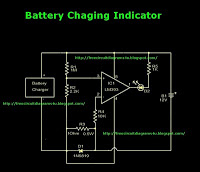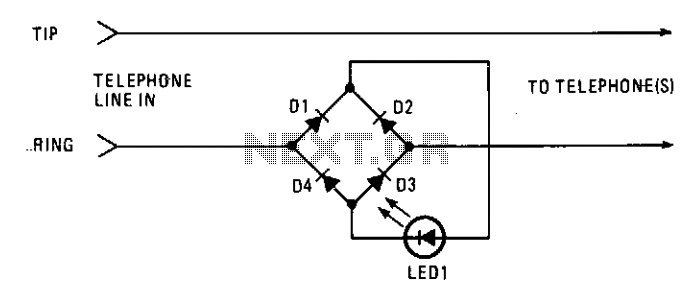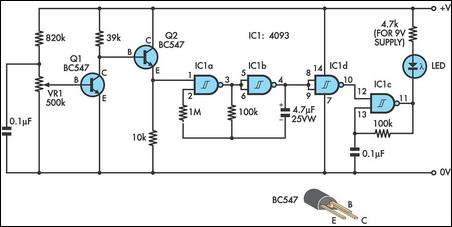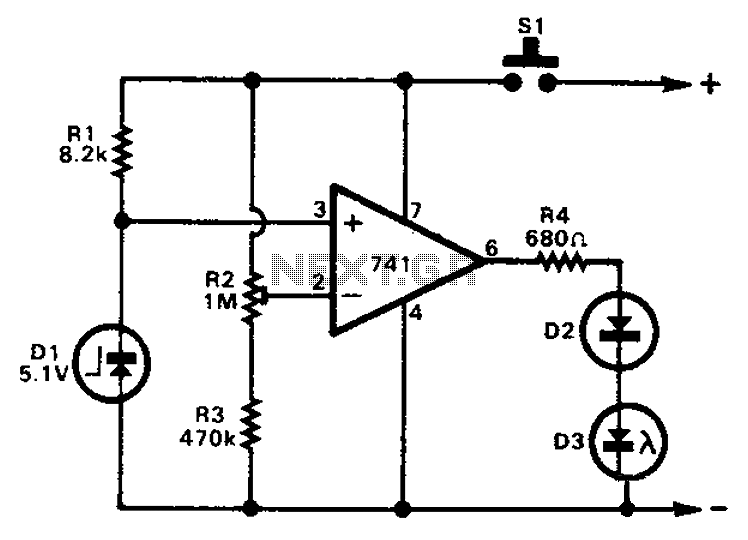
Parking Indicator for Automobile
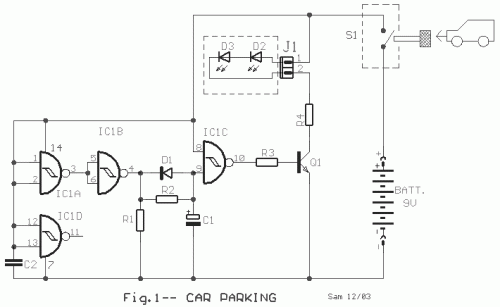
The circuit was designed to produce an indicator to assist a car in parking, particularly in areas with limited visibility. 1N1418.
The circuit utilizes a 1N1418 diode, which is a standard rectifier diode known for its reliability and efficiency in various applications. The primary function of this circuit is to provide visual feedback to the driver during parking maneuvers, enhancing safety and precision.
The schematic typically includes a microcontroller or a simple logic circuit that processes input from proximity sensors installed around the vehicle. These sensors detect obstacles and relay the information to the circuit. Based on the distance measured, the circuit activates an indicator light or a series of lights that change in intensity or color, depending on how close the vehicle is to an obstacle.
For instance, as the vehicle approaches an object, the indicator may shift from green to yellow and finally to red, signaling the driver to stop. The integration of the 1N1418 diode ensures that the circuit operates efficiently by preventing reverse current flow, which could damage sensitive components.
In addition to the diode, the circuit may also incorporate resistors for current limiting, capacitors for smoothing voltage fluctuations, and possibly a transistor to drive the indicator lights if higher current is required. Proper layout and connections are essential to ensure that the circuit functions reliably under varying environmental conditions, such as temperature fluctuations and vibrations experienced while driving.
This parking aid circuit represents a valuable enhancement for vehicle safety, particularly in urban environments where visibility can be compromised.The circuit was designed to produce an indicator to aid a car from parking especially in places without clear visibility. 1N1418 . 🔗 External reference
The circuit utilizes a 1N1418 diode, which is a standard rectifier diode known for its reliability and efficiency in various applications. The primary function of this circuit is to provide visual feedback to the driver during parking maneuvers, enhancing safety and precision.
The schematic typically includes a microcontroller or a simple logic circuit that processes input from proximity sensors installed around the vehicle. These sensors detect obstacles and relay the information to the circuit. Based on the distance measured, the circuit activates an indicator light or a series of lights that change in intensity or color, depending on how close the vehicle is to an obstacle.
For instance, as the vehicle approaches an object, the indicator may shift from green to yellow and finally to red, signaling the driver to stop. The integration of the 1N1418 diode ensures that the circuit operates efficiently by preventing reverse current flow, which could damage sensitive components.
In addition to the diode, the circuit may also incorporate resistors for current limiting, capacitors for smoothing voltage fluctuations, and possibly a transistor to drive the indicator lights if higher current is required. Proper layout and connections are essential to ensure that the circuit functions reliably under varying environmental conditions, such as temperature fluctuations and vibrations experienced while driving.
This parking aid circuit represents a valuable enhancement for vehicle safety, particularly in urban environments where visibility can be compromised.The circuit was designed to produce an indicator to aid a car from parking especially in places without clear visibility. 1N1418 . 🔗 External reference

